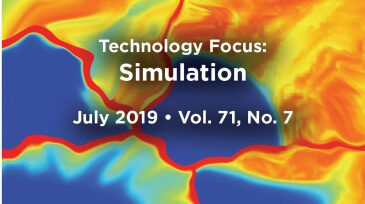Reservoir
Ranger acquires American Well Services for $90.5 million, adding 39 workover rigs and boosting its fleet by 25%.
Production from the Búzios field now tops 1 million B/D with six floating production systems in operation and more on the way.
Geophysicist Markos Sourial discusses advances in seismic imaging, the challenges of modern data processing, and what they mean for the next wave of subsurface professionals.
-
In this paper, the authors show the limitation of CEOS for modeling reservoir behavior of liquid-phase black and volatile oil in highly undersaturated reservoirs.
-
In this paper, the authors present an open-source tool kit for the generation of microfabricated transparent models of porous media (micromodels) from image data sets using optically transparent 3D polymer additive manufacturing (3D printing or sintering).
-
In my view, we still do not possess a full understanding of oil production in unconventional fractured reservoirs. Our ability to forecast such assets remains elusive, even with copious amounts of analytics, mountains of data, and an arsenal of machine-learning tools.
-
For this year’s feature, the selected papers provide innovative work flows that assist in determining productivity, reduce the effect of uncertainty conditions, and spark rejuvenation.
-
A new pulsed-eddy-current (PEC) electromagnetic (EM)-based tool called an enhanced pipe-thickness-detection tool (ePDT) has been introduced for the corrosion inspection of multiple pipes.
-
An integrated understanding of geomechanical effects, fracture propagation, and reservoir dynamics is critical in the efficient and cost-effective application of rejuvenation technologies for unconventional plays.
-
This paper demonstrates the need to couple the wellbore model to the reservoir-simulation and hydraulic-fracturing model in shale formations to optimize well landing, trajectory profile, and long-term productivity.
-
Numerical simulation methods of compositional models were incorporated with logarithmically spaced, locally refined, and dual-permeability reservoir models and local grid refinement (LGR) of hydraulic-fracture conditions to investigate the feasibility of CO2 injection in shale oil reservoirs.
-
In the first paper, a comprehensive experimental evaluation of gas injection for enhanced oil recovery (EOR) in organic-rich shale and, in the second, the effect of fluid transport in organic-rich shale on recovery mechanisms under gas injection.
-
This paper involved laboratory experiments introducing miscible gases into core samples to investigate enhanced oil recovery (EOR) mechanisms for Permian Basin shales to provide information to design field tests for a huff ’n’ puff (HNP) recovery process.













